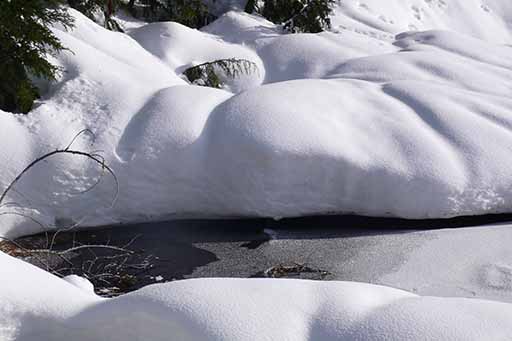Something to keep in mind…
Meat, dairy, and eggs
…
are “stealing”
…
my generation’s future!
…
Livestock production is
one of the greatest drivers
…
of climate change.
…
Greta Thunberg
..
.

It’s Happening Much Faster Than Expected
Dramatic warming projected in world’s major cities by 2050
PHYS ORG
Researchers examined the climate of the world’s 520 major cities using 19 variables that reflect variability in temperature and precipitation.
Future projections were estimated using established modeling that was intentionally optimistic, meaning it assumed carbon dioxide emissions would stabilize by the middle of the century through the implementation of green policies, with a mean global temperature increase of 1.4 Celsius..
Across the northern hemisphere, cities in 2050 will resemble places that are over 1,000 kilometers (600 miles) further south towards the equator.
Slow-Moving Hurricanes Like Barry Growing More Common
Weather Underground
As a result of their slower forward motion, these storms are now more likely to drop heavier rains, increasing their flood risk. … A storm moving 20% slower over land has the opportunity to dump up to 20% more rain atop a given point over land, increasing the flood risk for flood defense systems designed for a 20th-century climate with less extreme precipitation events.
Lake discovered 11,000 ft high in the Alps, in ‘truly alarming’ sign of climate change
Independent
A mountaineer has captured the formation of an “alarming” lake high in the French Alps after glacial snow melted in the intense heatwave that gripped central Europe in late June.
Bryan Mestre was shocked to discover the large pool of water at an altitude of 11,100ft (3,400m) in the Mount Blanc mountain range – claiming the unusual sight was a worrying sign.
Scientists have warned that heatwaves in Europe are becoming increasingly frequent, with the intense temperatures linked to climate change.
“Time to sound the alarm, only 10 days of extreme heat were enough to collapse, melt and form a lake at the base of the Dent du Géant and the Aiguilles Marbrées.”
Glacial melting in Antarctica may become irreversible
The Guardian
Antarctica faces a tipping point where glacial melting will accelerate and become irreversible even if global heating eases, research suggests.
A Nasa-funded study found instability in the Thwaites glacier meant there would probably come a point when it was impossible to stop it flowing into the sea and triggering a 50cm sea level rise. Other Antarctic glaciers were likely to be similarly unstable.
Recent research found the rate of ice loss from five Antarctic glaciers had doubled in six years and was five times faster than in the 1990s. Ice loss is spreading from the coast into the continent’s interior, with a reduction of more than 100 metres in thickness at some sites.
The Thwaites glacier, part of the West Antarctic ice sheet, is believed to pose the greatest risk for rapid future sea level rise. Research recently published in the Proceedings of the National Academy of Sciences journal found it was likely to succumb to instability linked to the retreat of its grounding line on the seabed that would lead to it shedding ice faster than previously expected.

HOT AIR NEWS ROUNDUP
Excellent video. All the heavyweights weigh in…
What caused this year’s bizarre winter and spring weather in the U.S. heartland?
Yale Climate Connections 7-10-19
The strength and persistence of that freakish weather pattern is consistent with jet stream behavior that climate scientists have been observing and measuring in recent years and could be linked to the shrinking of Arctic sea ice, experts interviewed in the video explain.
“This winter and spring has almost been a poster child for some of the connections that we’ve been talking about, that we should expect to see more of as the Arctic continues to warm up rapidly,” says Jennifer Francis, a senior scientist now with the Woods Hole Research Center.
This article is referenced in the video above…
‘Crazy’ and ‘scary’: Dramatic ocean warming off Alaska raises concerns for hunters and wildlife
Ancorage Daily News 6-25-19
The warmth appears to be weeks ahead of schedule, scientists said. It’s part of a “positive feedback loop” compounded by climate change. Rising ocean temperatures have led to less sea ice, which leads to warmer ocean temperatures, he said. The last five years have produced the warmest sea-surface temperatures on record in the region, contributing to record low sea-ice levels. “The waters are warmer than last year at this time, and that was an extremely warm year,” he said.
Comprehensive article…
How climate change is making hurricanes more dangerous
Yale Climate Connections 7-10-19
According to NOAA, 85% of all damages from hurricanes come from category 3, 4, and 5 storms. That’s the case in part because of their intense winds. Incredibly, a hurricane with 150-mph wind speed has 256 times the damage potential of a hurricane with 75-mph winds. … In Bhatia’s 2018 study, the intensity gains are even more alarming. The HiFLOR simulations project the number of major cyclones (category 3, 4, and 5) to increase by 20% globally and 29% in the Atlantic by 2081-2100. But HiFLOR suggests a significant increase in major systems even sooner.
Study: Climate Change Linked to More Rain in Hurricanes
EcoWatch 7-12-19
Barry’s rainfall is no longer an outlier, but a symptom of climate change. The research paper found that climate change intensified the rains of three major hurricanes that made landfall in the U.S. — Katrina, Irma and Maria — by 4 to 9 percent. The scientists also predicted that future warming could increase rainfall totals for the most extreme hurricanes and tropical cyclones by up to 30 percent, as PBS reported. “Climate change is in general increasing the frequency and intensity of heavy rainfall storms,” said Andreas Prein, a project scientist with the National Center for Atmospheric Research who was not involved with the study, as the New York Times reported.
The 10 Countries Most Vulnerable to Climate Change Will Experience Population Booms in the Coming Decades
Time 7-11-19
All but one of the 10 most vulnerable countries are in sub-Saharan Africa, a region whose total population is expected to double between now and 2050 and keep on growing long after populations have plateaued or even declined in wealthier parts of the world. Europe, home to 27 of the 36 countries ranked “low risk” on the index, will likely see its population decline by 5% by 2050. The U.S., ranked 161st most at risk out of 193, will see its population grow around 15% over that period. Somalia, Burundi and the DRC will have to deal with their populations more than doubling in three decades.
Is humanity dying?
Climate Code Red
Is it appropriate to speak of the end of our civilization or even the extinction of humanity? Some of the most important climate movements are doing just that. Extinction Rebellion is already carrying extinction in its name and the movement’s first call is: Tell the truth and explain the state of emergency. Fridays for Future’s Greta Thunberg also clearly states what options humanity has: “Either we choose to preserve our civilization or we do not.” And addressing world leaders, Thunberg says: “I want you to panic.” But is there really a reason to panic? The IPCC says that overheating can theoretically be stopped at 1.5 degrees. The IPCC reports are considered the “gold standard” of climate science because they summarize the findings of thousands of studies. …
The IPCC does not take into account feedback processes such as permafrost thawing, which may cause climate overheating to increase. According to Schellnhuber, however, the biggest drawback is the IPCC’s “probability obsession” because it means not enough attention is paid to the most dangerous developments: “Calculating probabilities has little meaning in the most critical areas, such as the thawing of permafrost or the possible collapse of entire states.” In addition, the damage of, for example, the collapse of our civilization cannot be quantified. A recent study by the Australian think tank Breakthrough states: “A risk is usually calculated by multiplying the probability of an event by the expected damage, but if the damage can no longer be quantified, this method breaks down.”
”First the province scrapped its carbon tax. Now clean energy advocates say they’re being shut out of talks about the province’s proposed new plan to deal with heavy polluters”…
Alberta government only invites industry to consultation on new emissions regulations
The Narwhal 7-10-19
“Alberta will no longer allow hostile interest groups to dictate our economic destiny as one of the most ethical major producers of energy in the world,” Kenney said when he announced the inquiry, and named the Pembina Institute as one of the inquiry’s potential targets.
”This global reflex causes huge changes in the amount of carbon contained in the Earth’s oceans…“
Breaching a ‘carbon threshold’ could lead to mass extinction
PHYS ORG 7-8-19
When the rate at which carbon dioxide enters the oceans pushes past a certain threshold—whether as the result of a sudden burst or a slow, steady influx—the Earth may respond with a runaway cascade of chemical feedbacks, leading to extreme ocean acidification that dramatically amplifies the effects of the original trigger.
Climate change is affecting crop yields and reducing global food supplies
MP 7-12-19
We found that climate change has affected yields in many places. Not all of the changes are negative: Some crop yields have increased in some locations. Overall, however, climate change is reducing global production of staples such as rice and wheat. And when we translated crop yields into consumable calories – the actual food on people’s plates – we found that climate change is already shrinking food supplies, particularly in food-insecure developing countries. … Our study showed that climate change is reducing consumable food calories by around 1% yearly for the top 10 global crops. This may sound small, but it represents some 35 trillion calories each year.
LEGISLATION, ELECTIONS & POLICY
As Activists Push Democratic Climate Debate, DNC Donors Profit from Oil, Gas
Real News 7-7-19
In fact, one fossil fuel industry-connected adviser, Ernest Moniz, is connected to one Democratic candidate currently leading in the polls. He is former Vice President Joe Biden’s climate adviser and served as U.S. Secretary of Energy under President Barack Obama. Moniz’s connections to the fossil fuel industry and to high-level Democratic donors with ties to the oil and gas sector show that, despite a push by activists for a Democratic climate debate and for candidates to reject fossil fuel money, the industry still carries significant clout within the party’s highest level.
Asset managers worth $15 trillion make climate risk promise to Macron
Climate Home News 7-12-19
Blackrock, Goldman Sachs, BNP Paribas, HSBC, Natixis, Amundi, State Street and Northern Trust committed to form a coalition and work with six sovereign wealth funds to consider the climate-risks of large financial assets following a meeting with Macron on Wednesday, the Elysée confirmed. The coalition said it would reconvene during the climate action summit organised by UN secretary general António Guterres in September to update Macron on the progress of its initiatives for climate-resilient investments.
Bipartisan Group of Governors Pushes Back on Big Oil, Tells Trump Admin to Halt Clean Car Rollbacks
Desmog 7-9-19
“According to the draft statement, its 24 signatories represent 52 percent of the United States population and include two Republican governors — Charlie Baker of Massachusetts and Phil Scott of Vermont — as well as the governors of four states that voted for Mr. Trump in 2016, Montana, North Carolina, Pennsylvania and Wisconsin.” The governors join the Alliance of Automobile Manufacturers — which warned that the proposed rules would create “untenable” instability for the industry — in asking that the U.S. Department of Transportation (DOT) and the U.S. Environmental Protection Agency (EPA) halt the proposed rollback.
THE ARCTIC
Researchers discover ice is sliding toward edges off Greenland Ice Sheet
EurekAlert 7-10-19
A recent research group that discovered that you do not need beds with till or mud, which acts as a lubricant, to have high rates of sliding. Rather, they discovered that it is over hard bedrock where ice slides more rapidly. Additionally, the ice slides over the bedrock much more than previous theories predicted of how ice on the Greenland Ice Sheet moves. “That’s the kicker. The Greenland Ice Sheet is happily sliding over a surface that theory says it shouldn’t be able to rapidly slide over,” Humphrey says. “What’s important is that, because of this, you get a lot of ice to the oceans or low altitudes where it can melt really fast. It’s like a lump of molasses sliding off the continent. It just doesn’t melt. It slides toward the ocean.”
Alaska Chokes on Wildfires as Heat Waves Dry Out the Arctic
Insilde Climate News 7-11-19
Global warming has been thawing tundra and drying vast stretches of the far-northern boreal forests, and it also has spurred more thunderstorms with lightning, which triggered many of the fires burning in Alaska this year, said Brian Brettschneider, a climate scientist with the International Arctic Research Center who closely tracks Alaskan and Arctic extreme weather. So far this year, wildfires have scorched more than 1.2 million acres in Alaska, making it one of the state’s three biggest fire years on record to this date, with high fire danger expected to persist in the weeks ahead.
FOSSIL FUELS
The Pentagon’s Carbon Boot Print
The Real News 7-10-19
And think of it this way: It’s like a multinational corporation with 500 military bases in the world, many thousands of buildings— not to mention ships, aircraft, tanks, which use enormous quantities of fuel. So one plane can get five gallons per mile— not miles per gallon, but gallons per mile, if you’re thinking in terms of standard fuel economy. So it’s quite easy for one of the largest institutions in the world to use that much fuel, especially because they use extremely inefficient— from the perspective of fuel economy— vehicles for transportation. So about 70% of their fuel use is for moving things, planes, people. And about 30% is for installations.
AIIB must stop backing gas in climate-hit Bangladesh
Climate Home News 7-8-19
A tenth of AIIB’s approved projects to date are in Bangladesh, all in the energy sector. But despite the country’s laudable ambitions to tackle climate change, the AIIB has so far not invested in a single renewable energy project. … With no renewable energy projects in its Bangladesh portfolio, the heavy focus on gas can’t just be explained as a ‘transition fuel’ – in fact it has become a dangerous distraction. Power purchase agreements between power plants, such as Bhola, and the Bangladesh government often stretch over at least 20 years. This goes well beyond 2030
Excellent rundown…
The ‘Historical Jigsaw of Climate Deception’: Private Notes Show How Big Oil Spread Climate Science Denial
Desmog 7-12-19
A cache of meeting minutes, briefings, and emails uncovered by the Climate Investigations Center shows how industry group the Global Climate Coalition (GCC) used its financial clout and political connections to cast doubt on mainstream climate science until its disbandment in 2002. The GCC would for decades cast doubt on the veracity of climate science and strategically spread the message that the UN Intergovernmental Panel on Climate Change (IPCC) was a politicised body, to discourage regulatory reform that would hit coalition members’ profits.
Big Insurer Ditches Coal Coverage in Win for Climate Action Groups
Climate Change News 7-11-19
Chubb Ltd., one of the nation’s largest commercial insurance companies, announced it will move away from insuring and investing in coal. It becomes the first major U.S. insurance company to take such action, joining more than a dozen European and Australian insurers that have already adopted similar policies.
Fossil fuels increasingly offer a poor return on energy investment
Science Daily 7-11-19
An evaluation of the global energy return on investment for fossil fuels and renewable sources reveals a much more level playing field than previously believed. An enduring argument for the ongoing use of fossil fuels is their high energy return on energy investment. This refers to the ratio of how much energy a source such as coal or oil will produce compared to how much energy it takes to extract. Previously, the estimated ratios for energy return on investment (EROI) have favoured fossil fuels over renewable energy sources. Oil, coal and gas are typically calculated to have ratios above 25:1, this means roughly one barrel of oil used yields 25 barrels to put back into the energy economy. Renewable energy sources often have much lower estimated ratios, below 10:1.
WEATHER
In drought-hit Delhi, the haves get limitless water while the poor fight for every drop
Japan Ties 6-28-19
The water scarcity is even more acute in the Bhalswa Dairy locality of northwestern Delhi, more than 30 km (20 miles) from Sangam Vihar. The water from a couple of community taps and hand pumps are too toxic to use, forcing people to queue up for a government tanker that comes just once a day. As a result, fights frequently break out when people, mostly can-carrying women and children, sprint toward the arriving tanker. Last year, at least three people were killed in scuffles that broke out over water in Delhi.
Mumbai rains: Is India’s weather becoming more extreme?
Daily Sun 7-11-19
Overall, more than 44% of land across India is estimated to be under drought – 10% more than last year. A heatwave is declared when temperatures reach at least 4.5Cabove an area’s normal temperature for two days. From 1980 to 1999, there were 213 heatwaves. Between 2000 and 2018, roughly the same time interval, there were 1,400. Also of note is the very noticeable jump in extremes of heat and cold for 2017 and 2018. But the outlook for extreme weather conditions in the longer term is not encouraging. A study carried out by an international team of researchers has predicted that by 2100, about 70% of India’s population is likely to face threats from extreme heat and humidity driven by global warming.
Dramatic warming projected in world’s major cities by 2050
PHYS ORG 7-10-19
By the year 2050, London’s climate will resemble Madrid’s today; Paris will be more like Canberra; Stockholm like Budapest and Moscow like Sofia, according to a new analysis published Wednesday that relied on optimistic projections. The changes will be even more dramatic for the world’s major tropical cities like Kuala Lumpur, Jakarta, and Singapore which will experience unprecedented climate conditions, resulting in extreme weather events and intense droughts.
Did climate change play a role in Western Europe’s June heat wave?
Yale Climate Connections 7-10-19
World Weather Attribution scientists conducting a real-time attribution study concluded that the heat wave was at least five times more likely to occur as a result of human-caused climate warming than would have been the case in the absence of human-caused emissions. However, the scientists cautioned that their estimate was the most conservative they could reach. They reported that climate change may have made the heat wave as much as 100 times more likely than would have been the case in a world without that human input.
”“The future is already here, a floodier future,” said William Sweet, a NOAA oceanographer and lead author of the study”…
‘A floodier future’: Scientists say records will be broken
AP 7-11-19
The report predicted that annual flood records will be broken again next year and for years and decades to come from sea-level rise. “Flooding that decades ago usually happened only during a powerful or localized storm can now happen when a steady breeze or a change in coastal current overlaps with a high tide,” it read. The nationwide average frequency of sunny day flooding in 2018 was five days a year, tying a record set in 2015. But the East Coast averaged twice as much flooding. The agency says the level of sunny day flooding in the U.S. has doubled since 2000.
Climate change: How hot cities could be in 2050
BBC 7-11-19
From a study looking at how a 2C temperature increase could change the world’s 520 major cities.

HEALTH
Climate Concern Fuels the Rise of ‘Eco-anxiety’
MedScape 7-10-19
“These last months have been particularly terrifying for people,” Van Susteren told Medscape. She reports that her phone has been ringing constantly these days with patients and fellow practitioners seeking her guidance. Even her own long-term patients are now bringing it up to her regularly. “Many people were able to repress some of these thoughts, often by figuring that somebody will take care of it or there will be an almost magical technological fix, but it seems all of a sudden to have burst into our consciousness.”

ADAPTION AND RESILIENCE
Climate pledges by cities, states, and businesses add up, Rocky Mountain Institute finds
Yale Climate Connections 7-10-19
Researchers at the nonprofit think-tank calculated the potential impact of more than 3,000 existing climate commitments. They found that, together, those commitments could get the U.S. about two-thirds of the way towards the carbon pollution reductions it had originally promised to make by 2025.

WILDLIFE & THE ENVIRONMENT
No new males: Climate change threat to Cape Verde turtles
EurekAlert 7-11-19
Rising temperatures could mean no male loggerhead turtles hatch at a key breeding ground by the end of this century, new research suggests. … The sex of turtle hatchlings is determined by incubation temperature, and this study combined current temperature and hatchling data with projections from the Intergovernmental Panel on Climate Change (IPCC).
Even under a scenario based on low future emissions and warming, by 2100 just 0.14% of hatchlings would be male.
Climate change and deforestation together push tropical species towards extinction
PHYS ORG 7-7-19
Only 38 per cent of tropical forest is ‘wildlife friendly’ as a result of deforestation, increasing the likelihood that vulnerable species will go extinct, say scientists. … For millennia, wildlife around the world has moved up and down mountains and towards or away from the equator to cope with changes in the Earth’s temperature. The deforestation of tropical forests is creating a patchwork landscape where natural habitat is disconnected and confined to smaller spaces between a mass of farmland. The research found that most tropical forest habitat is currently too disconnected to provide pathways to cooler climates, meaning wildlife will struggle to escape the impacts of climate change.
Wildfires disrupt important pollination processes by moths and increase extinction risks
EurekAlert 7-11-19
The team found that 70% of the moths caught in Portugal were transporting pollen, but in spring over 95% of moths were found to be involved in this important ecological process. In total, moths carried the pollen of over 80% of flowering plant species in the study area. However, the total amount of pollen transported by moths was five times lower at burned sites, suggesting that more frequent wildfires may disrupt night-time pollination and increase the risk of extinction of these key species.
Coral reefs shifting away from equator
Science Daily 7-9-19
Coral reefs are retreating from equatorial waters and establishing new reefs in more temperate regions, according to new research. The researchers found that the number of young corals on tropical reefs has declined by 85 percent — and doubled on subtropical reefs — during the last four decades.
Early arrival of spring disrupts the mutualism between plants and pollinators
EurekAlert 6-12-19
Long-term monitoring revealed that snowmelt timing dictates when Corydailis ambigua flowers. The earlier the snowmelt, the earlier the flowering. The researchers also found that bumblebees, which hibernate underground during winter, become active when soil temperatures reach 6 C. When the snowmelt is early, flowering tends to occur before the bees emerge, creating a mismatch. The wider the mismatch, the lower the seed-set rate due to insufficient pollination.
Decades-long butterfly study shows common species on the decline
Science Daily 7-9-19
The most extensive and systematic insect monitoring program ever undertaken in North America shows that butterfly abundance in Ohio declined yearly by 2%, resulting in an overall 33% drop for the 21 years of the program. … The data from Ohio enabled population trends to be estimated for 81 butterfly species and found three times as many species were trending downward as upward — three out of every four species with a positive or negative trend grew less abundant over the course of the monitoring. Forty of the analyzed species had no significant trend up or down.

PROTESTS • EXTINCTION REBELLION • RESISTANCE
The Youth Climate Summit starts July 12. It’s full of young activists trained in the anti-Trump movement.
WP 7-12-19
On July 12, young people from across the United States are converging in Miami to participate in the Youth Climate Summit. The summit builds on the momentum of the global youth climate movement, which has focused on school strikes and demanding that governments take meaningful steps to address climate change.
Who are these young people focusing on the climate? My data shows for the first time that the youth climate movement brings in people with experience in what is sometimes called the “resistance”: the broader movement that has been challenging President Trump’s administration and its polices since January 2017. This movement has merged the efforts of various progressive movements within it (including women’s rights, gun control and climate change). That includes a significant portion of these young climate activists,
Climate Change Looms Large for Teen Activists at Miami’s Youth Climate Summit
MNT 7-12-19
Zero Hour members [are] in Miami this week to organize an event to helping youth activists join the fight for the environment. The conference will take place this … and will kick off Saturday with a presentation about the challenges facing South Florida. Already the event has seen huge support from politicians and celebrities: Prince Harry and Meghan Markle mentioned This Is Zero Hour in an Instagram post at the beginning of July, and former Vice President Al Gore encouraged Floridians to attend the summit. The Avengers’ Don Cheadle and Mark Ruffalo lent their financial support to the initiative by helping a group of environmental activists from communities such as Standing Rock, Flint, and the Bronx with their hotel rooms and airfare to Miami.
Climate activists turn to lawsuits to force action on global warming
Nature 7-12-19
Of the 1,328 suits filed from 1990 to May 2019, more than three-quarters were in the United States (see ‘Climate in court’). But the report’s authors note that the share of lawsuits filed in low- and middle-income countries such as Pakistan and Uganda is on the rise. The vast majority of suits have been filed since 2006. …Most of the legal battles are against governments, in attempts to bolster action against global warming. Many cases seek to strengthen climate policies.
Fridays for Future
Why I’m climate striking against Fox News on Friday
The Guardian 6-26-19
Fox’s coverage of the climate crisis is especially terrible. Unlike the other broadcast networks, Fox doesn’t practice climate silence. It does something worse: it spreads climate misinformation – for example, by reporting as fact the lie that the well-established science linking greenhouse gas emissions with rising temperatures is unfounded. When the US Senate was about to vote on the Green New Deal last March, Fox aired more than twice as many prime-time segments discussing the Green New Deal as MSNBC and CNN combined. But Fox’s coverage was full of climate denial talking points, including absurd suggestions that the Green New Deal would get rid of cows and cost a stratospheric $93tn.
AIIB faces climate protests at annual meeting in Luxembourg
China Dialogue 7-12-19
The Asian Infrastructure Investment Bank (AIIB) is holding its first ever annual meeting outside of Asia on 12-13 July in Europe – a continent that has just suffered June temperatures more than 6-10C above average in many countries, including in France, which experienced its hottest day on record: 45.9C. As the AIIB gathers in Luxembourg, worried citizens are putting the heat back on the Chinese-led bank for its questionable record on climate change. Activists from all over the world are planning demonstrations, hosted by school strikers, Youth for Climate, local organisations Laika and Etika, Extinction Rebellion and others.
Greta Thunberg
Greta Thunberg’s biography to be published in August
TOI 7-15-19
“Greta Thunberg is one of the most extraordinary young people of our time and her positive action and determination make her an inspirational role model for children. I am thrilled that my first acquisition for Simon & Schuster is a story as important and empowering as Greta’s.
Extinction Rebellion
JOIN XR USA: on their website
XR NEWSLETTERS & EVENTS: on their website
XR USA: on YOUTUBE
Climate activists including Extinction Rebellion to receive £500,000 from US philanthropists
The Independent 7-12-19
Grassroots climate activists like Extinction Rebellion are set to receive £500,000 from US philanthropists with the promise of millions more in the coming months. Three wealthy donors – Trevor Neilson, Rory Kennedy and Aileen Getty – have launched the Climate Emergency Fund (CEF) to help support school strikes and activism groups.
First group of Extinction Rebellion protesters appear in court
County Press 7-12-19
The hearings, which continued all day in two court rooms simultaneously, recorded a mixture of pleas, resulting in a number of trials scheduled for September and October. 1,151 people were arrested in connection with the protests. … So far 180 have been charged, one cautioned for outraging public decency and 32 released with no further action. The hundreds of others remain under consideration for charges.

CLIMATE STUDIES
Ammonia from agriculture influences cloud formation over Asia
Science Daily 7-11-19
The Asian tropopause aerosol layer (ATAL) is located at twelve to 18 kilometers height above the Middle East and Asia. This accumulation of aerosols in the Asian monsoon was discovered first in 2011. Its composition and effect, however, have been unknown so far. Scientists have now found crystalline ammonium nitrate in this layer. In the AIDA cloud chamber, climate researchers have demonstrated how this substance is formed in the upper troposphere.
Global Warnings
Paul Beckwith: “I declare a global climate change emergency to claw back up the rock face to attempt to regain system stability, or face an untenable calamity of biblical proportions.”
Kevin Hester: “There is no past analogue for the rapidity of what we are baring witness to. There has been a flood of articles … 2C is no longer attainable and that we are heading for dangerous climate change”
Magi Amma: We need to turn on a dime at mach nine! …
Equivalencies:
• 1 gigatonne equals one billion tons
• 1 gigatonne of carbon equals 3.67 gigatonnes of CO2
• 1 part per million of atmospheric CO2 is equivalent to 7.81 gigatonnes of CO2





